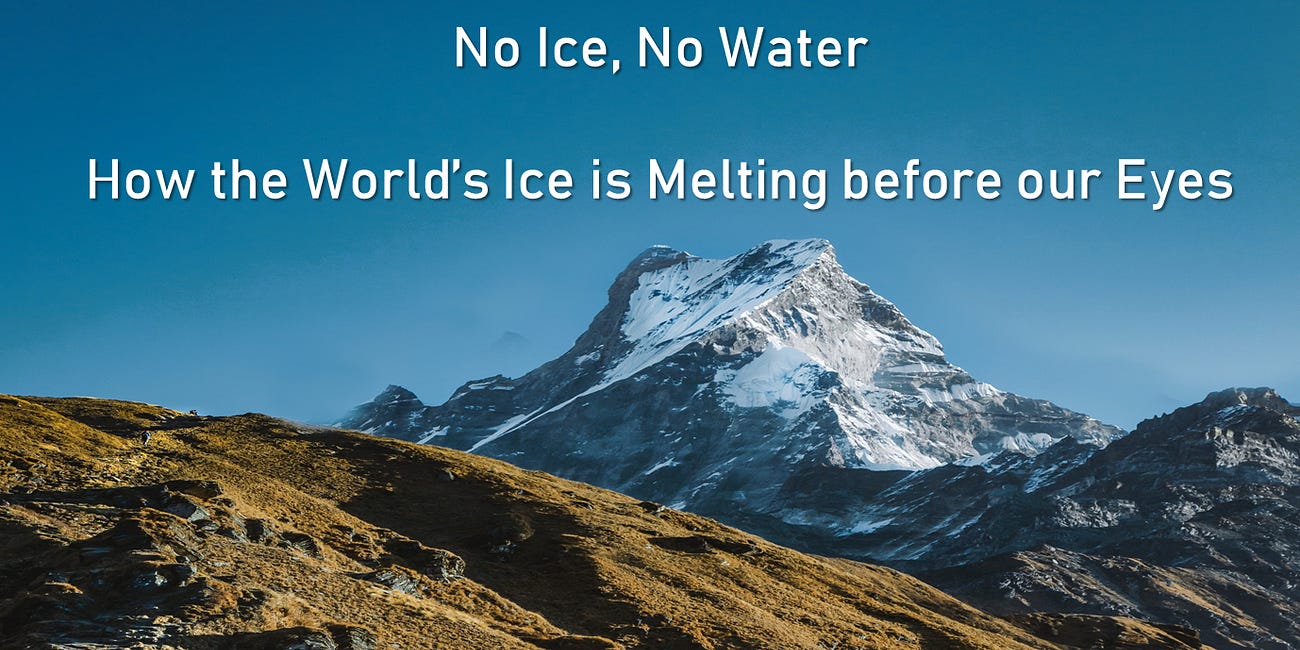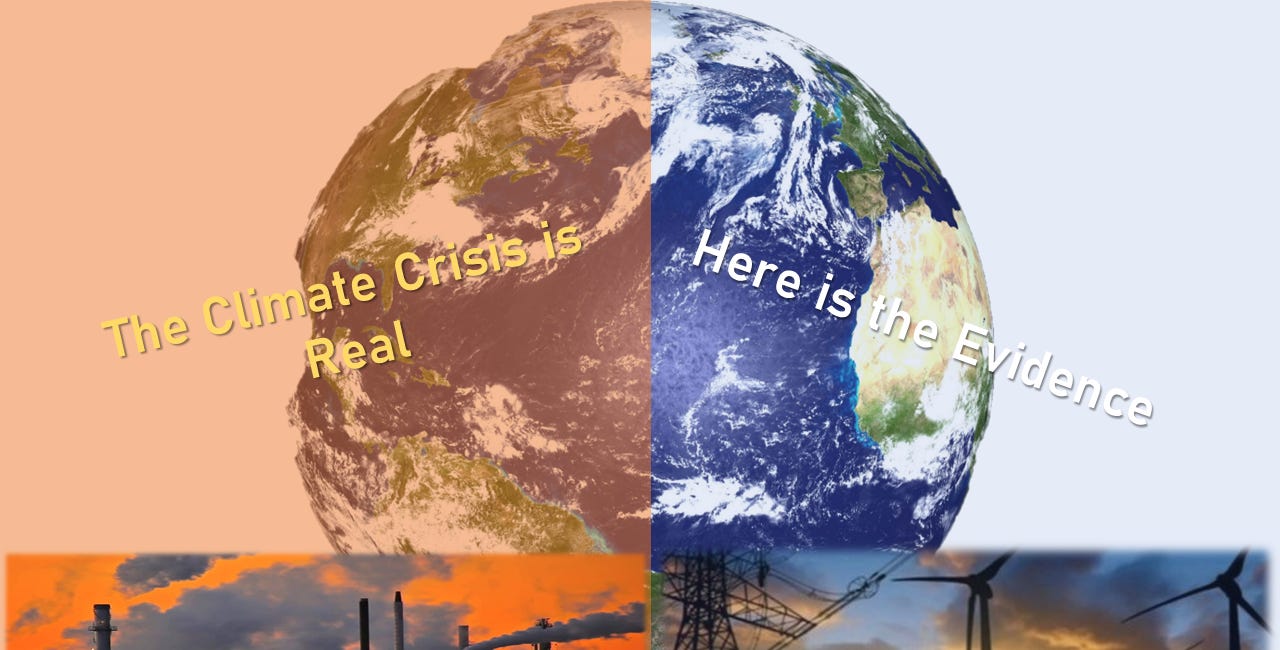Climate Change is Destroying Siberia
And it is adding to an already endangered world
***
Find more about me on Instagram, Facebook, LinkedIn, or Mastodon. Visit the Evidence Files Facebook and YouTube pages, which includes the latest podcast episode; Like, Follow, Subscribe or Share! Or visit my EALS Global Foundation’s webpage page here.
***A version of this post first appeared at www.ealsglobal.org.
Sitting partly within the Arctic circle, the vast region of Siberia is situated at ground zero for some of the worst effects of climate change. For a land known for its frigidness, over the last few years Siberia has suffered record-breaking heat, and the calamities such heat has wrought. For example, back in June of 2023, temperatures there exceeded 100 degrees Fahrenheit (37.7° Celsius). On one of those days, the town of Jalturovosk reached 100.2 degrees (37.9° C), the hottest ever recorded there. For reference, that town lies about 131 miles (211 km) north of Kazakhstan. Other towns in Siberia that summer also saw temperatures exceed 100°. Omar Baddour, chief of climate monitoring and policy services at the World Meteorological Organization, told CNN that “Siberia is one of the fastest warming regions on the planet with hot extremes increasing in intensity.” During normal summers in years past, despite temperatures occasionally eclipsing 30° Celsius (86° F), the heat never lasted long, or reached high enough, to begin thawing the permafrost. This was helped by long, brutally cold winters. Alas, no more.
The winter of 2020 in Siberia was the warmest since scientists started keeping records on the area, 130 years years ago. As winters tend to get shorter and less cold, Siberia is seeing increasing numbers of wildfires as a result. Anton Beneslavskiy of Greenpeace Russia stated, “The fire season is longer. Now it comes early and ends later.” Beneslavskiy noted that the combined fire activity of June 2019 and June 2020 exceeded “the previous 16 Junes put together.” You can see the impact of this in a series of tables, here. The fires themselves are worsening in intensity and duration. The year 2021 was among the worst. That year, the Russian government declared a state of emergency in Yakutia as fires ravaged about 1.5 million hectares. In total, roughly 62,000 square miles of land burned. This land area would make it the 21st largest state in the United States. Furthermore, at the time, the fires covered an area larger than all the concurrent wildfires across the globe combined. Its reach astounded some scientists. Jessica McCarty, a wildfire researcher at Miami University, proclaimed “I was a little shocked to see a fire burning 10 kilometers south of a bay of the Laptev Sea, which is like, the sea ice factory of the world.” Yakutia endured a state of emergency again in 2023 as wildfires near the size of New York City struck the area that year.
The 2021 wildfires in Siberia affected the entire globe. In total, those fires emitted more carbon dioxide in two and a half months than Germany did over the entire year; and Germany is the world’s sixth worst polluter. Plumes of smoke extended thousands of miles, reaching all the way to the North Pole and the coast of Alaska. Mark Parrington, senior scientist of the European Copernicus Atmosphere Monitoring Service (CAMS), stated:
Transport of smoke across the Arctic Ocean isn't in itself something unusual, but to see such high values of different smoke constituents, aerosols and carbon monoxide, reaching the North Pole and then on to North America is reflecting the unusual scale and persistence of the number of fires and amount of smoke they have been producing this summer.
Smoke from fires like these tend to pick up various items long frozen inside the permafrost as that permafrost continues to thaw under warming temperatures. Parrington said of this, “That smoke contains a whole range of volatile organic compounds, which are very hazardous.” NASA scientists announced that the character of the smoke that reached the North Pole represented “a first in recorded history.”
What is being released from the permafrost is of particular concern. The Smithsonian explains, “Permafrost is rich in organic material that froze before it could completely decompose.” Among this material are what some have called “zombie viruses.” On this, I previously wrote:
Returning liquid water to a previously frozen landscape instigates the reactivation of numerous microorganisms, including many bacteria related to common current-day bacterial pathogens. Most of these pose relatively little threat in the face of modern antibiotics. Some, however, may possess genetic predisposition against some antibiotics, as several studies have shown. New viruses (to humans) present a much greater risk, though. As the COVID pandemic proved, viruses with a close relation to already-known pathogens still require extensive study, and development of anti-agents takes time. For viruses not encountered in modern history, or by humans at all, the associated calamities could be more severe and longer lasting.
More recently, geneticist Jean-Michel Claverie from Aix-Marseille University told the media,
At the moment, analyses of pandemic threats focus on diseases that might emerge in southern regions and then spread north. By contrast, little attention has been given to an outbreak that might emerge in the far north and then travel south – and that is an oversight, I believe. There are viruses up there that have the potential to infect humans and start a new disease outbreak.
Claverie added that as Arctic sea ice melts, new shipping passages will open. Increased traffic in those areas will advance the release of various pathogens, but also bring in higher populations of people—shipping crews and supporting personnel both onboard and ashore—who might suffer exposure. Already this is beginning as Arctic sea ice has reduced by dramatic numbers, and will almost certainly reach 100% disappearance by 2040.
Other critical failures have occurred because of melting permafrost. Ryan Murdock outlined several disasters Siberia has faced as a result of permafrost loss. In May of 2020, for example, a petrochemical storage tank leaked 20,000 tons of toxic oil. Weakening support columns anchoring the tank gave way as a result of the softening of the permafrost beneath them. Melting permafrost also causes explosive “gas emission” craters caused by the buildup of gas beneath the surface. So far, scientists have identified 7,000 of these bubbles that are in imminent danger of exploding. Furthermore, the movement of these gases beneath the surface has caused visible damage to existing oil pipelines and threatens many more. Changes to the landscape from melting permafrost also affects farming in the region. Some areas are seeing the advent of swamps and small lakes that consume otherwise arable land. These “pockmarks” have caused damage to vast numbers of buildings and residential structures in addition to arable land.
Alongside melting permafrost, the weather in Siberia has become much more erratic. Since the mid-1990s, instances of extreme weather have increased year-to-year, including thunderstorms, hail, squalls, and tornados. Some years have suffered prolonged periods of extreme heat or extreme cold (cold worse than what Siberian residents normally endure). On the whole, however, temperatures have risen, especially since 2021. Rapidly warming temperatures increase the chances of floods, such as what occurred on the Yenisei River basin in 2021, which saw the largest inflow of water since 1903. “According to the estimates of the Russian Hydrometeorological Center, floods of this magnitude [normally] occur less frequently than once every 100 years.” Siberia experienced record flooding just two years before, caused by unusual rainfall amounts. The same area also endured heavy flooding in 2022, again due to unusually severe weather.
Rising temperatures of course also contribute to the degradation of Siberian snow and glaciers, a problem of acute concern the world over. Like the glaciers discussed in my article “No Ice, No Water,” glaciers in the Siberian Altai Mountains provide fresh water to numerous people downriver along the Ob and Yenisei rivers. Glacial loss in the region has reached 59% loss of area since the Little Ice Age. Like glaciers, snow pack, which also serves as a freshwater source, has declined in the northernmost parts of Siberia between 1967 and 2018. Even in the southern regions, snow cover diminished in forested areas by 7%, but increased by 2% in fields, a shift largely attributed to higher average windspeeds (a byproduct of extreme weather). Lessening snow cover exacerbates permafrost melt, too. Moreover, warming temperatures raise the frequency of rain-on-snow (ROS) events, which inhibit foraging by wildlife. This led to two major starvation events of reindeer in 2006 and 2013.
The rapid ice melt in the northern hemisphere threatens even more disastrous consequences if it causes a complete shutdown of the Atlantic meridional overturning circulation (AMOC). I will discuss that in a future article.
Conclusion
Siberia provides (yet another) example of the inarguable environmental destruction human activity is causing. The region is suffering among the fastest warming of any place on the globe. This cannot be blamed on local activity as the population there contains the lowest density of just about anywhere in the world. “Natural” causations for global warming and climate change have long been disproved by an extraordinarily voluminous canon of evidence. Indeed, no serious scientist argues otherwise. What the world's scientists also agree on is that the planet is swiftly steering toward a tipping point—a moment when the future will be forever changed—and not for the better.
For a broad survey of evidence of human-caused climate change, click below.
***
I am a Certified Forensic Computer Examiner, Certified Crime Analyst, Certified Fraud Examiner, and Certified Financial Crimes Investigator with a Juris Doctor and a Master’s degree in history. I spent 10 years working in the New York State Division of Criminal Justice as Senior Analyst and Investigator. Today, I teach Cybersecurity, Ethical Hacking, and Digital Forensics at Softwarica College of IT and E-Commerce in Nepal. In addition, I offer training on Financial Crime Prevention and Investigation. I am also Vice President of Digi Technology in Nepal, for which I have also created its sister company in the USA, Digi Technology America, LLC. We provide technology solutions for businesses or individuals, including cybersecurity, all across the globe. I was a firefighter before I joined law enforcement and now I currently run a non-profit that uses mobile applications and other technologies to create Early Alert Systems for natural disasters for people living in remote or poor areas.





